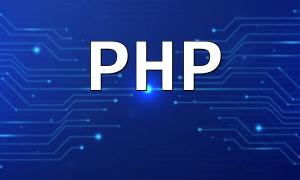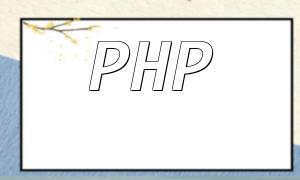With the rapid development of the internet, real-time communication has become an important user expectation for websites and applications. PHP and AJAX, as two common technologies, are both capable of implementing real-time communication features, but they differ in their implementation methods and use cases. This article provides a detailed comparison between PHP real-time communication and AJAX, and includes code examples to help developers better understand and choose the appropriate technology.
In PHP, the main technologies for real-time communication are WebSockets and Long Polling. WebSockets provide a full-duplex communication protocol, allowing real-time data transmission between the client and server. Long Polling, on the other hand, simulates real-time communication by continuously sending requests and waiting for responses from the server.
Here is an example of PHP code using WebSockets for real-time communication:
// Create WebSocket server
$server = new WebSocketServer('localhost', 8080);
// Handle connection event
$server->on('connection', function($conn) {
// Handle received messages
$conn->on('message', function($message) use ($conn) {
// Process message
$conn->send($message);
});
});
// Start the server
$server->run();
The above code creates a WebSocket server. When a new connection is established, the server triggers a callback for the connection event, and when a message is received, it triggers a callback for the message event to handle real-time communication.
AJAX is a technique for asynchronously communicating with the server without reloading the entire web page. Common methods for implementing real-time communication with AJAX include polling and Comet.
Here is an example of using AJAX polling for real-time communication:
function getData() {
$.ajax({
url: 'getData.php',
success: function(data) {
// Process returned data
console.log(data);
// Continue polling
setTimeout(getData, 1000);
}
});
}
// Start polling
getData();
This example uses jQuery's AJAX method to send requests and continually poll for the latest data. When the request is successful, the returned data is processed, and the next request is sent.
PHP real-time communication features and AJAX each have their strengths and applicable use cases. PHP's WebSockets and Long Polling technologies can achieve low-latency real-time communication and are suitable for high-performance, large-scale real-time communication applications. However, PHP real-time communication requires additional server resources and may not be efficient for large-scale applications.
In contrast, AJAX implements real-time communication through polling and Comet without relying on additional server resources, making it suitable for small-scale real-time applications. However, AJAX polling can lead to frequent requests and responses, increasing the server load, especially with high concurrency.
In conclusion, whether to choose PHP real-time communication or AJAX depends on the specific business needs and application scenario. For high-performance, large-scale real-time communication applications, PHP's WebSockets and Long Polling are recommended; for small-scale real-time communication needs, AJAX polling is a simpler and more flexible choice.
We hope this article, with code examples, helps developers better understand the comparison between PHP real-time communication and AJAX, allowing them to make a more informed technology choice.









